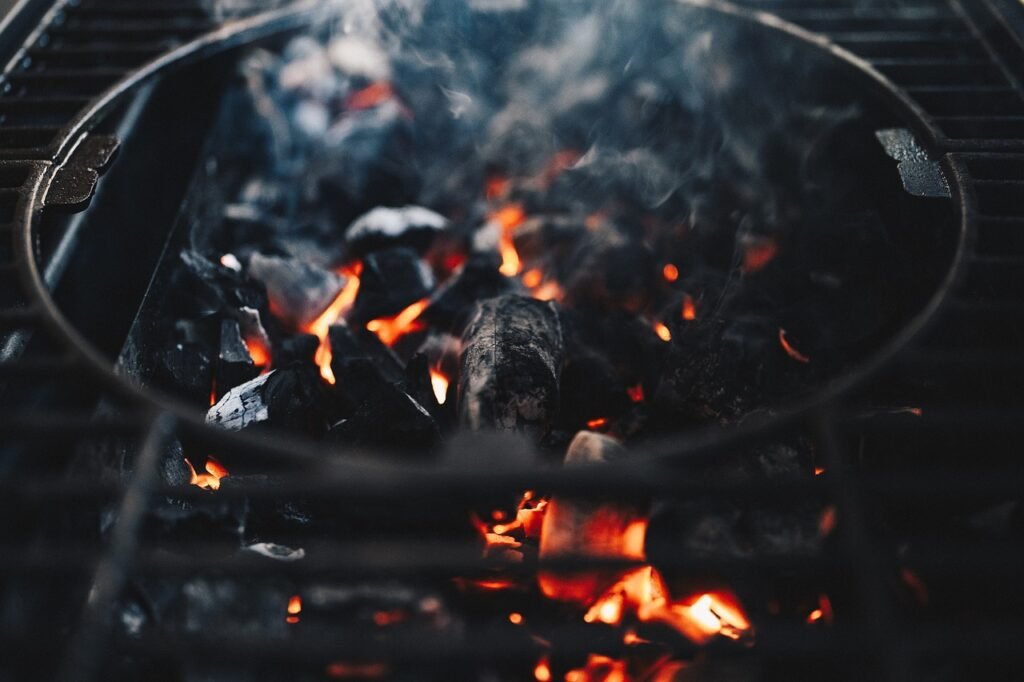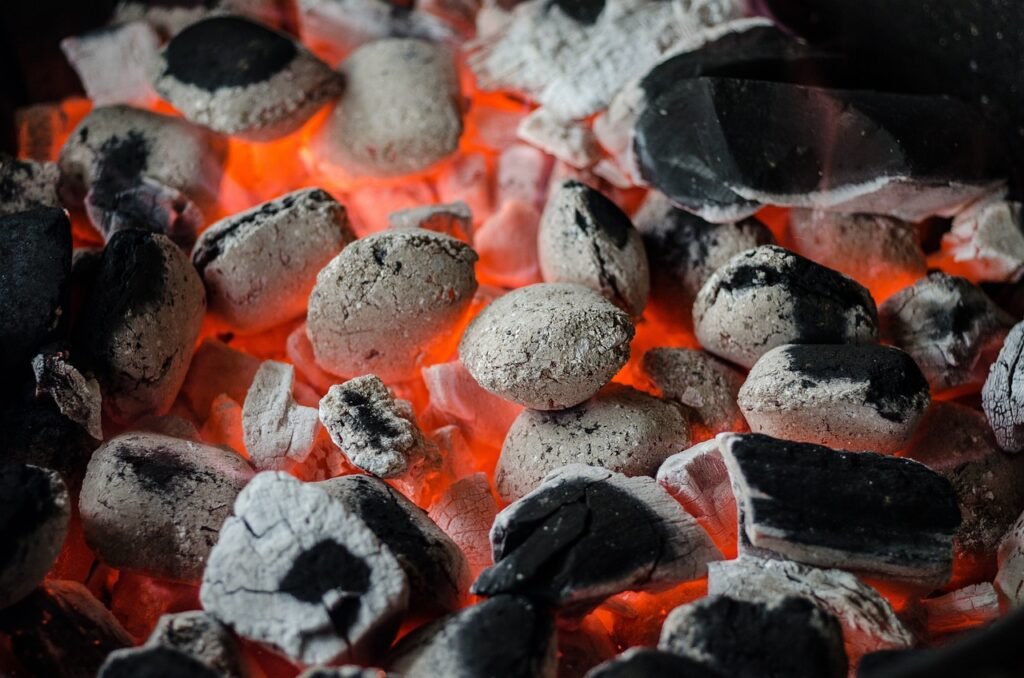Have you ever wondered if there’s a difference between smoking meat and grilling? Well, wonder no more! In this article, we’ll explore the distinctions between these two popular cooking methods. Whether you’re a seasoned pitmaster or just starting out on your culinary journey, understanding the nuances between smoking and grilling will help you achieve the perfect flavor and texture in your meats. So, if you’re ready to elevate your barbecuing game, let’s dive in and uncover the secrets behind smoking and grilling!
Smoking Meat
Definition of Smoking Meat
Smoking meat is a cooking technique that involves exposing meat to low temperatures for an extended period of time in the presence of smoke. This process imparts a smoky flavor and aroma to the meat, making it incredibly delicious and tender. Instead of directly applying heat, smoking slowly cooks the meat, allowing it to absorb the flavors of the wood smoke.
Cooking Process and Equipment
The cooking process for smoking meat involves a combination of low temperature and smoke. It typically requires a smoker, which is a specialized cooking appliance designed specifically for smoking. Smokers can be powered by various fuels such as charcoal, wood, propane, or electricity. Most smokers feature a firebox or heat source separate from the cooking chamber. The smoke from the firebox circulates around the meat, gradually raising its internal temperature.
Temperature Range
When it comes to smoking meat, maintaining the right temperature is crucial. The ideal smoking temperature typically ranges from 200°F (93°C) to 275°F (135°C). This low and slow cooking method allows the collagen in the meat to break down gradually, resulting in a tender and flavorful end product.
Cooking Time
Smoking meat is a slow and patient process that can take anywhere from a couple of hours to several days, depending on the size and type of meat being cooked. For example, smoking a brisket can take 10-14 hours, while ribs may require 4-6 hours to achieve that perfect tenderness.
Smoke Infusion
The smoke generated by burning wood chips or chunks is a key component in smoking meat. It not only imparts a unique flavor, but also helps preserve the meat by acting as a natural antimicrobial agent. Different types of wood can be used to create different flavors and intensities. Some popular smoking woods include hickory, apple, cherry, mesquite, and oak.
Types of Wood Used
The choice of wood used for smoking greatly impacts the flavor profile of the meat. Each type of wood lends its own distinct flavors and aromas to the meat, making the smoking experience incredibly versatile. For example, hickory wood produces a rich and smoky flavor, while fruitwoods like apple or cherry add a subtle sweetness. It’s important to experiment with different wood combinations to find your favorite flavor profile.
Flavor Profile
One of the main reasons people love smoking meat is the incredible flavor it adds. The slow cooking process allows the meat to absorb the smoky essence from the wood, resulting in a deep and complex flavor profile. The smokiness adds a pleasant earthy and slightly sweet taste, which pairs well with various seasonings and marinades. Whether it’s a succulent smoked brisket or tender smoked salmon, the flavor imparted by smoking is truly unparalleled.
Texture and Moisture
Smoking meat not only enhances the flavor but also improves its texture and moisture. The low and slow cooking process breaks down the tough connective tissues in the meat, resulting in a tender and juicy final product. The extended cooking time allows the flavors to penetrate deep into the meat, ensuring a moist and flavorful bite in every mouthful.
Suitable Meats for Smoking
While almost any type of meat can be smoked, certain cuts and varieties tend to yield the best results. Large cuts of meat, such as briskets, pork shoulders, and ribs, are particularly well-suited for smoking. These cuts benefit from the slow cooking process, as it helps tenderize the tough fibers and infuse them with incredible flavor. Additionally, poultry, fish, sausages, and even vegetables can also be smoked to add unique and delicious flavors.
Health Considerations
While smoking meat results in flavorful and tender dishes, it’s important to consider certain health aspects. The slow cooking process in smoking can lead to the formation of potentially harmful chemicals called polycyclic aromatic hydrocarbons (PAHs) and heterocyclic amines (HCAs). These compounds are formed when fat and juices from the meat drip onto the hot coals or wood, causing smoke and flare-ups. To minimize the risks, it’s important to control the cooking temperature, trim excess fat from the meat, and avoid charring or burning the meat.

Grilling
Definition of Grilling
Grilling is a cooking method that involves cooking food directly over an open flame or hot coals. It is a popular and versatile cooking technique that can be used for various foods, including meat, fish, poultry, vegetables, and even fruits. Grilling imparts a delicious smoky flavor and adds a delightful charred texture to the food, making it a favorite cooking method for many outdoor cooking enthusiasts.
Cooking Process and Equipment
Grilling is a relatively simple cooking process that requires minimal equipment. It typically involves placing the food directly on a grill grate or grilling surface, which is heated by either an open flame from a gas or charcoal grill, or glowing coals from a charcoal grill. The food is then cooked by the direct heat from the flame or coals, resulting in a distinct sear and char on the surface.
Direct vs. Indirect Heat
When grilling, the heat source can be either direct or indirect. Direct heat grilling involves cooking food directly over the flames or hot coals. This method is ideal for thin cuts of meat, seafood, and vegetables that cook quickly. Indirect heat grilling, on the other hand, involves placing the food away from the direct heat source and cooking it with the lid closed. This method is more suitable for larger cuts of meat or foods that require longer cooking times, as it allows for even cooking without excessive charring.
Temperature Range
Grilling requires high heat to cook food quickly and create that irresistible sear. The temperature range for grilling typically ranges from 350°F (175°C) to 550°F (290°C) or even higher, depending on the type of food and desired doneness. It’s important to preheat the grill to achieve the desired cooking temperature before placing the food on the grate.
Cooking Time
Grilling is known for its fast and efficient cooking time. The duration of grilling varies depending on the type of food and desired level of doneness. Thin cuts of meat, like steaks or burgers, can be cooked within a few minutes per side, while thicker cuts, such as whole chickens or roasts, may require more time. Smaller, tender vegetables and seafood also grill quickly, making grilling an excellent option for a variety of dishes, especially for those who appreciate quick and delicious meals.
Flavor Profile
Grilling adds a unique and desirable flavor profile to foods. The intense heat from the grill sears the exterior of the food, creating a caramelized crust that enhances the natural flavors. The combination of direct heat and the smoky aroma from the grill imparts a distinct and appetizing taste to meats, vegetables, and even fruits. Whether it’s the charred sear on a perfectly cooked steak or the smoky sweetness of grilled corn on the cob, the flavors created by grilling are truly mouthwatering.
Texture and Moisture
Grilling is known for creating a delectable texture and moisture balance in food. The high heat seals in the natural juices, resulting in a juicy and flavorful bite. The direct heat also promotes the development of a desirable charred crust on the exterior of the food, providing a satisfying contrast to the tender interior. This combination of textures creates a delightful eating experience that is loved by many.
Suitable Foods for Grilling
Grilling is a versatile cooking method suitable for a wide range of foods. Meats, such as steaks, burgers, chicken breasts, and pork chops, are popular choices for grilling due to their ability to cook quickly over high heat. Grilled seafood, such as shrimp, salmon, and swordfish, also imparts a delicious smoky flavor. Additionally, vegetables like peppers, zucchini, corn, and even fruits like pineapple and peaches can be grilled to perfection, adding a charred and slightly sweet taste.
Health Considerations
Grilling is generally considered a healthy cooking method as it requires little to no added fats or oils. However, certain health considerations should be kept in mind. The high heat of grilling can lead to the formation of carcinogenic compounds, such as HCAs and PAHs, similar to smoking. To minimize the risks, it is important to avoid excessive charring or burning of food, use lean cuts of meat or trim excess fat, and marinate foods before grilling, as marinades can act as a protective barrier against the formation of harmful compounds.
Variations of Grilling
Grilling offers a world of possibilities and numerous variations to explore. One popular variation is plank grilling, where food is cooked on a wooden plank, such as cedar or maple, which adds additional smoky flavors. Another variation is rotisserie grilling, where the food is cooked on a rotating spit over indirect heat, resulting in even cooking and juicy meats. Additionally, smokers with grill capabilities can be used to combine the smoking and grilling techniques, offering a wider range of flavors and cooking methods. The variations in grilling techniques and flavors make it an exciting and versatile cooking method to experiment with.
In conclusion, both smoking meat and grilling offer unique and delicious ways to cook a variety of foods. Smoking imparts a deep smoky flavor and tenderizes the meat through slow cooking, while grilling adds a desirable char and seals in natural juices through high heat. Whether you prefer the robust and rich flavors of smoked meats or the quick and satisfying results of grilled dishes, both techniques offer an enjoyable and flavorful experience. As always, it’s important to consider health considerations and experiment with different woods, seasonings, and cooking variations to find your perfect culinary balance. So fire up your smoker or grill, gather your favorite ingredients, and enjoy the artistry of cooking outdoors. Happy smoking and grilling!

